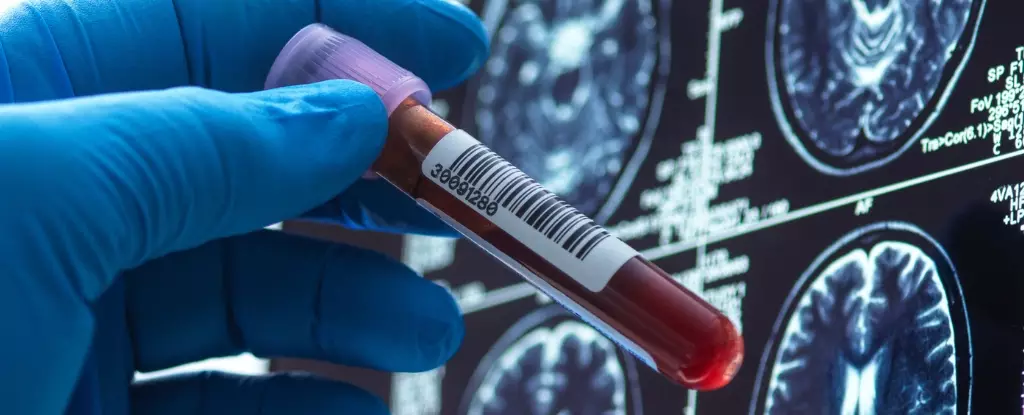For decades, Alzheimer’s disease has remained an insurmountable frontier in medical science, cloaked in frustration and relentless disappointment. Despite billions poured into research, a definitive cure continues to elude scientists, leaving millions of patients and their families in despair. Yet, recent developments inject a fresh sense of optimism, challenging the narrative of hopelessness that has persisted for too long. Breakthrough drugs and innovative diagnostic techniques now serve as beacons of hope, signaling a possible shift in how society confronts this devastating neurodegenerative disorder.
A Glimmer of Progress: The Promise of New Medications
Two groundbreaking drugs, donanemab by Eli Lilly and lecanemab by Biogen and Eisai, have marked a pivotal moment in Alzheimer’s treatment. These medications are the first to demonstrate tangible benefits by slowing disease progression, albeit modestly. Unlike previous candidates, which failed to produce meaningful clinical improvements, these therapies have shown potential primarily in patients diagnosed early in the disease course. While the promise is undeniable, it is tempered by sobering realities. The treatments are expensive, come with risks such as brain hemorrhages, and have limited efficacy, sparking debate over their cost-benefit balance.
International acceptance of these drugs reveals a complex landscape. In the United States, agencies have approved their use, recognizing their potential, but elsewhere, health authorities are cautious or resistant. France’s decision not to reimburse these medications, and the UK’s critique of their perceived limited benefit versus cost, reflect divergent priorities and raise questions about equitable access to cutting-edge therapies. Are we truly advancing, or merely inching forward in a cautious, uneven manner?
The Diagnostic Dilemma: From Invasiveness to Simplicity
Early diagnosis is central to effective intervention, yet the methods available today remain inadequate. The traditional approach relies on invasive procedures like lumbar punctures, which are costly, uncomfortable, and sometimes exclude at-risk populations. This bottleneck hampers both early treatment initiation and research into the nuanced dynamics of the disease.
Enter the blood test — a seemingly simple solution that could revolutionize diagnosis. Detecting biological markers in blood promises a non-invasive, accessible alternative, and recent approvals in the United States suggest a paradigm shift is underway. However, skepticism persists, especially in Europe, where the consensus remains that a comprehensive clinical assessment remains essential. Critics argue that biomarkers alone may not reliably distinguish between normal aging-related changes and true Alzheimer’s pathology, cautioning against over-reliance on a single test.
The debate underscores a broader concern: can early diagnosis, often predicated on biomarker detection, genuinely alter the disease trajectory? Or will it merely identify at-risk individuals without effective means to intervene? The credibility of these diagnostic tools hinges on their ability to predict who will develop dementia with high certainty, a challenge that remains unresolved.
Understanding and Addressing the Roots of Alzheimer’s
Preventative strategies have long been eyed as the ultimate solution, yet the evidence remains fragmented and underwhelming. Known risk factors such as obesity, smoking, alcohol consumption, and hearing loss account for nearly half of Alzheimer’s cases, emphasizing lifestyle’s role in disease development. Consequently, public health initiatives promoting exercise, healthy diets, and social engagement have gained prominence. However, rigorous trials examining whether such interventions can significantly prevent or delay dementia are still lacking or inconclusive.
Interestingly, some recent research suggests that interventions at later stages might have merit in slowing decline rather than preventing it. For instance, a study highlighted that intensive support in the course of two years could modestly decelerate cognitive deterioration, providing a glimmer of hope for active management. Still, such findings often feel incremental—adequate for management but insufficient as a cure.
The broader question persists: are these efforts enough to shift the future of Alzheimer’s from inevitable decline to manageable disease? Or will the stubborn complexity of its pathology continue to thwart our most valiant efforts? Only long-term, comprehensive studies spanning a decade or more will shed light on the true potential of prevention and lifestyle modification.
A Future Steeped in Uncertainty, but Not Darkness
While skepticism remains justified regarding the immediate impact of recent advances, there’s an undeniable shift in the landscape of Alzheimer’s research. The convergence of promising drugs, cutting-edge diagnostics, and increased awareness of modifiable risk factors signals an evolving understanding of the disease’s multifaceted nature.
However, crucial questions linger. Will these new treatments be affordable and accessible enough to make a meaningful difference on a global scale? Can widespread, early diagnosis genuinely lead to better patient outcomes, or will it create more anxiety and disillusionment? And ultimately, are we moving closer to a cure or merely sharpening the tools to better understand and manage an affliction that has stubbornly resisted all our efforts?
In the face of these uncertainties, one thing is clear: hope, while fragile, is no longer a distant dream. It has become a tangible pursuit rooted in the relentless pursuit of innovation. Whether this will translate into a true breakthrough remains to be seen, but the momentum is undeniable. Society’s challenge now is matching scientific progress with policy, accessibility, and a sustained commitment to unraveling the mysteries of Alzheimer’s before the shadows grow even darker.


Leave a Reply